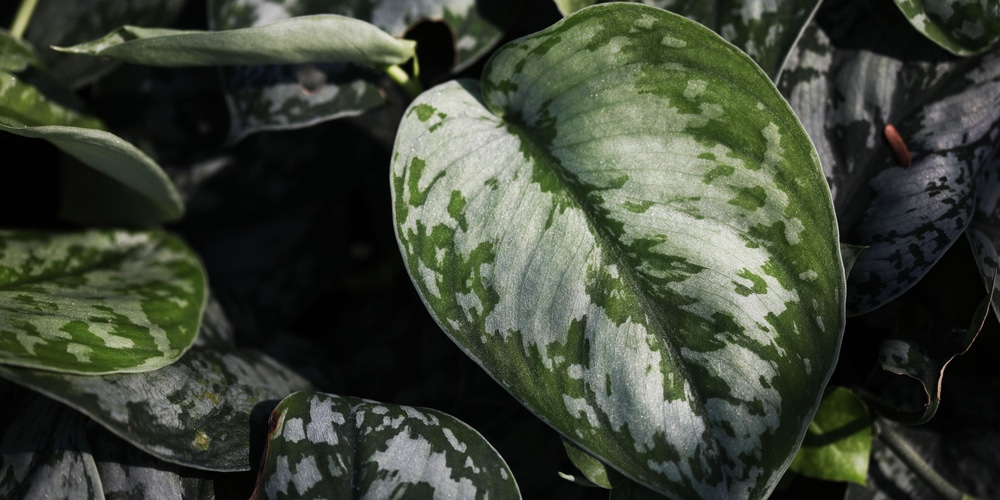Known for their attractive trailing vines and heart-shaped leaves, pothos plants are a favorite indoor plant for many gardeners. They are undemanding and easy to care for, offering an easy way to add some green to your living space. But can you grow them outside?
Well, pothos can thrive outside. Not only can these vines grow well in their natural habitat, but also in other areas where they are provided with ideal growing conditions. Generally, if you live in a region where temperatures never dip below 50°F, you should be able to grow pothos plants outside.
Under ideal conditions, outdoor pothos plants can grow incredibly large. Read on to learn more about growing pothos outside and how to care for them.
Growing pothos outside

Although prominent as houseplants, pothos plants are tough and hardy, with the ability to survive outside in many climates. They are native to Old World tropical forests, where they grow and live as vines under the shade of tall trees.
When grown outside in a humid and hot environment, these vines can get very large, reaching over 30 feet long.
Naturally, these resilient verdant vines do well in low-light conditions and temperatures above 50°F. They are truly hardy in USDA planting zones 10 through 12. However, this doesn’t mean that you can’t grow these lovely vines outside in regions not falling in these growing zones.
Pothos thrives in warm, humid, and partial shade areas. As such, you should be able to grow them outside successfully if you live in a place where temperatures do not fall below 50 degrees Fahrenheit.
Here are optimal conditions for growing pothos:
- Soil: Pothos vines are not fussy with soil conditions and will grow successfully in virtually all types of soil. However, they prefer nutrient-rich soil with a pH between 6.1 and 6.5. They will appreciate growing in well-draining soil that retains only enough moisture.
- Light: Pothos grow best in bright, indirect light. In the forest, these vines grow under the canopy of tall trees. When planting them outside, choose a partially shaded spot, where the vines will be protected from direct sunlight but still get bright light. Bright light brings out glowing colors.
- Temperature: Pothos are tropical plants and prefer warmer temperatures. They will grow best when the temperature range is 70°F and 85°F. However, they are hardy and will withstand temperature drops up to 50°F; anything below is too cold for your pothos. If you live in an area where temperatures drop even slightly below 50°F (10°C) in winter and have planted pothos outside, it is prudent to move them indoors when frost threatens. Otherwise, your plants will struggle to survive and eventually die.
- Watering: While pothos can grow in water (without soil), they are hardy with low water requirements when planted in soil. Even so, pothos planted outside will need more water than they would if they were growing indoors. Water your outdoor pothos when the top two inches are dry, and beware that overwatering can cause yellowing.
- Fertilization: Generally, pothos plants are not heavy feeders. Since nutrients in the garden soil don’t get depleted, giving your pothos food once a month in the spring and summer will keep them healthy. Remember also to use a balanced fertilizer.
- High humidity: Pothos grow best when the humidity is between 50% – 70%.
Pothos are grown for their beautiful and vibrant foliage, constituting light green, yellow, or white variegated heart-shaped leaves. They get very large when grown outdoors under ideal conditions. Surprisingly, these lovely vines have also been known to grow well in the wild without any human intervention.
In forests, pothos leaves can reach more than 2 feet in length.
If you grow pothos on good soil, you may see them flowering when they grow to about 35 feet or more.
Can pothos grow outside: Conclusion
Pothos continues to be one of the most popular ornamental plants. What many gardeners do not know is that they grow exceedingly well outdoors. Generally, you should be able to grow pothos outside year-round if your region experiences warmer temperatures that never drop below 50 degrees Fahrenheit in winter. Hopefully, this guide will help you provide your pothos with the best growing conditions. Growing pothos outside gives them a better chance to reach their full potential.
Note: Pothos is mildly toxic to cats and cases, so watch on your pets so that they don’t ingest the vines. The inner can also cause skin irritations. This can be remedied by washing affected parts with cold water.
Related Article: Pearls and Jade Pothos
